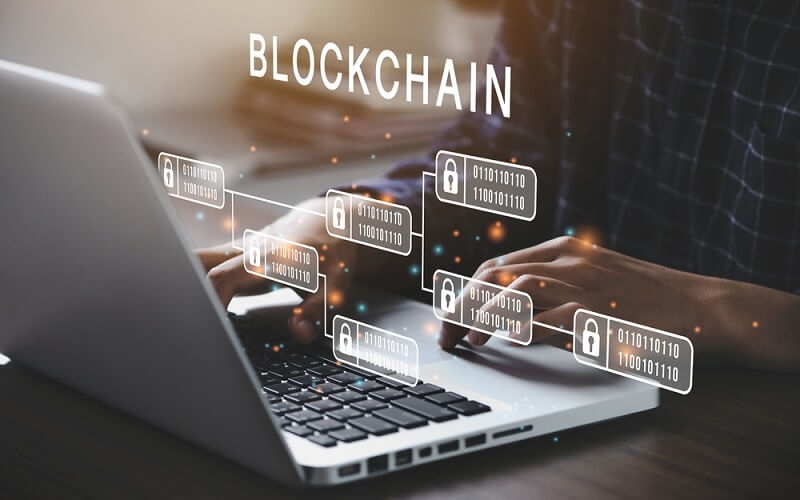
In recent years, blockchain has grown and persevered to change our perception of security, speed, and trust in banking. Initially perceived simply as the underlying technology for cryptocurrencies, it has now crossed the chasm into traditional finance. In many instances, its potential for transforming everyday banking is beginning to be realized, especially in the U.S. market.
This article examines the transformational role of blockchain in everyday banking, including use cases and changing trends in U.S. banking habits. From managing personal finance to transferring money internationally, blockchain has asserted itself as a foundational layer for banking's future. Let's take a closer look at how it is going to happen and why it matters.
Blockchain is, at its base, a distributed ledger—a decentralized solution where data is stored across a network. Unlike centralized databases controlled by a single entity (like a bank), blockchain-based databases are transparent, resistant to tampering, and highly secure.
In the banking industry, this means
So what does this mean for everyday life? Let's look at the significant use cases.
Establishing a bank account or applying for a loan typically requires mandatory verification procedures, thus stretching the timeframe for onboarding applicants to become customers. However, blockchain for bank verification in the U.S. is rapidly reducing verification time.
Banks can access a blockchain ledger (with your permission) that uses distributed technology to instantaneously confirm your personal identity, financial background, and credentials, eliminating the requirement to submit the same documents repeatedly.
Daily Impact:
Opening a checking account online could take minutes instead of days without compromising security.
One of the most powerful use cases of blockchain in banking is cross-border payments, especially in the area of blockchain remittances in the USA. Sending money internationally through conventional means is cost-prohibitive and time-consuming (sometimes taking multiple days and rendering ludicrous fees); blockchain solves this.
Real-World Example:
A customer transferring money from the U.S. to relatives worldwide can send that money at minimal cost to the sender in mere minutes, radically changing how immigrant communities and the global workforce transfer money.

Distributed ledger personal finance is a concept in which users can track and manage their finances in a decentralized environment without relying solely on banks.
Use Case:
A user could automatically route 10% of each paycheck to a blockchain-based savings contract that locks funds until a goal is reached—a vacation or emergency fund.
One of the strongest selling points of blockchain is transparency. With blockchain transparent banking, customers can see exactly how and when transactions are processed.
Practical Example:
Imagine receiving a loan and being able to trace its origination, terms, and repayments on a secure, immutable ledger. This reduces disputes and promotes fairness.
Banks operate under strict regulatory frameworks, particularly regarding fraud, anti-money laundering (AML), and customer identity (KYC). Blockchain simplifies this.
By automating compliance through blockchain, banks can focus more on customer service and innovation.
Smart contracts are self-executing programs on a blockchain that run when specific conditions are met. They are transforming routine banking services.
Result:
No more late fees, missed payments, or long processing times. Everything is handled through code you can trust.
Blockchain helps reach the unbanked or underbanked in the U.S., especially those with limited access to traditional institutions.
This democratizes banking access, especially in rural or underserved urban areas.
Blockchain uses smart contracts and distributed ledgers to enable peer-to-peer lending directly between individuals with no intermediary.
Example:
A freelancer in the U.S. could access a small business loan via a decentralized lending app backed by blockchain, without dealing with traditional gatekeepers.
Identity theft and data breaches are ongoing issues in banking. Blockchain brings a new level of security by enabling self-sovereign identities.
This protects consumers and reduces banks’ exposure to costly fraud and compliance failures.
Even your bank’s reward points and cashback can be improved with blockchain!
Everyday Example:
Instead of waiting weeks to use your credit card points, blockchain lets you spend them instantly through smart contracts and integrated merchant systems.
Despite its potential, blockchain isn’t without hurdles. Banks and regulators still face issues related to
Some blockchain networks still struggle with transaction volume and speed.
Evolving laws around data privacy, custody of assets, and international usage can slow adoption.
Many banks still use outdated infrastructure that’s incompatible with blockchain.
Due to its association with crypto, some people still view blockchain as speculative or untrustworthy.
However, education, pilot programs, and technological innovation gradually address many of these concerns.
As blockchain matures, we expect more real-world integration across the banking sector. Here’s what the future may hold:
Transfers and payments taking 1–3 business days could become instantaneous.
AI-powered financial advisors operating over blockchain-ledgered accounts.
One verified digital identity to access all your financial services securely.
Peer-to-peer savings, lending, and investment platforms where banks act as facilitators, not controllers.
The incorporation of blockchain in traditional financial systems is not a tech narrative—it is happening today, and it is changing everything from how we open accounts to how we send money abroad. This guide on blockchain in everyday banking: use cases transforming U.S. financial habits suggests that this impact extends far beyond the buzzwords.
From blockchain for bank verification in the U.S. to distributed ledger personal finance, blockchain is improving transparency, reducing costs, and empowering users. It is increasingly providing faster, safer, and more expansive financial services, and it represents a significant shift in how Americans deal with money.
For both consumers and institutions, the banking of the future is decentralized, digital, and blockchain-based.
This content was created by AI